Imsil Cheese Village (임실 치즈마을)
18.4Km 0 2024-04-07
4 Cheese maeul 1-gil, Imsil-eup, Imsil-gun, Jeonbuk-do
Imsil Cheese Village is the home of Korean cheese. In 1966, Father Didier t'Serstevens (Korean name: Ji Jeong-hwan), a Belgian priest, brought two mountain goats to the village and started making cheese. He worked day and night with the locals to make the cheese that has earned its current reputation. Imsil Cheese Village runs experience programs such as mozzarella cheese making and yogurt making.
Imsil Cheese Village (전북 임실치즈마을)
18.5Km 18764 2024-04-07
4, Cheese maeul 1-gil, Imsil-eup, Imsil-gun, Jeonbuk-do
Imsil Cheese, perhaps the most famous cheese in Korea, all started in 1960 with two goats. Having expanded greatly, visitors can get first-hand experience at making cheese as well as enjoy cooking with the freshest cheese available. The factory also provides cheese and yogurt at low-rate prices.
Geumseongsanseong Fortress (담양 금성산성)
18.8Km 30327 2020-03-13
Dorim-ri, Damyang-gun, Jeollanam-do
+82-61-380-2812
Geumseongsanseong Fortress in Geumseongsan Mountain (603m) forms a boundary
between two small villages located on the border of two provinces (Geumseong-myeon,
Damyang-gun, Jeollanam-do and Sunchang-gun, Jeollabuk-do) and is one of the
three popular mountains of the Honam region (the Southwestern region of Korea
that includes Jeollanam-do and Jeollabuk-do). The fortress is surrounded by
two walls connecting Cheolmabong Peak, Undaebong Peak, and Jangdaebong Peak.
The total length of the outer wall is 6.486 meters and inner wall is 859 meters.
Historians are uncertain about the year the fortress was built, and
have concluded that it dates back to the Three Kingdoms Period (57 BC – 676 AD) based on an examination of the ruins and remains discovered in the surrounding
area. The fortress was reconstructed in 1409 and repaired in 1610 after the
Imjin War (1592-1598). Following that, it continued to develop into a strong
military base.
- Classification: Historic Site No. 353
- Date of Designation: August 24, 1991
- Owner: Park Jinseong and 85 persons
- Age: Three States Era
- Site Area: 1,349,977㎡
- Kind of Cultural Properties: Castle Site
The Face Shop [Tax Refund Shop] (더페이스샵)
18.8Km 0 2024-04-22
385-16, Nammun-ro, Namwon-si, Jeollabuk-do
-
Seomjingang River (섬진강)
19.2Km 7905 2022-08-25
Okgwa-myeon, Gokseong-gun, Jeollanam-do
+82-61-360-8419
The Seomjingang River, one of the four major rivers in Korea, starts from Imsil and Sunchang. It merges with several bodies of water in Gokseong, Gurye and Hadong before flowing into the South Sea.
In Gokseong, the Seomjingang River is also known as the Sunjagang River. It flows about 36 kilometers through the region. A number of big and small valleys throughout the length of the river provide fantastic views and relaxation spots all year round. Also, Riverside Festival and Seomjingang Literature Forum are held every summer to offer fun summer activities along the river.
Stayriun [Korea Quality]스테이리운[한국관광 품질인증]
19.3Km 0 2024-08-14
53-7 , Gosaem-gil, Namwon-si, Jeonbuk-do
+82-507-1493-0660
Stayriun is a private hanok adjacent to the famous Gwanghalluwon Garden in Namwon, Jeollabuk-do. Accommodation is in the sarangchae and the main building. The sarangchae is a cozy space for two people with a small yard and a wooden maru where you can enjoy a cup of tea. The main building has high ceilings, large windows and a terrace, giving a sense of openness; the floor is neatly finished in wood and stone. There’s a beam projector, and an indoor spa.
Myeongmun Jegwa (명문제과)
19.4Km 0 2024-04-07
56 Yongseong-ro, Namwon-si, Jeonbuk-do
Myeongmun Jegwa is a bakery that has been situated in its current location for nearly 40 years. It is so famous that people from all over the country come to Namwon to taste the bread here. A line of people can be seen here all day, regardless of weekdays or weekends. Signature bread items include a Korean streusel bun filled with whipped cream, honey almond bread, and homemade ham bread. Fresh bread is available at 10:00, 13:30, and 16:30, and order tickets are handed out before the bread comes out. It is located near major tourist attractions in Namwon, such as Gwanghalluwon Garden and Chunhyang Theme Park, making it a good place to add in the itinerary.
Namwonyechon by Kensington [Korea Quality] / 남원예촌 [한국관광 품질인증]
19.4Km 1191 2024-04-07
17 , Gwanghanbuk-ro, Namwon-si, Jeonbuk-do
+82-63-636-8001
Namwonyechon in Namwon, Jeollabuk-do, combines the beauty of traditional hanok with the convenience of a hotel. In summer, rooms with daecheongmaru are popular, and in winter, you can cozy up to an oakwood fire. A hanbok experience, pansori and gayageum performances, and a traditional games experience are provided free of charge. Residents get a free entry pass with mapae(a certificate to allow officials to use horses) to nearby Gwanghalluwon Garden, Chunhyang Theme Park, and Baekdudaegan Ecological Education Center. Room minibars are also free of charge.
Gwanghallu Pavilion (광한루)
19.5Km 17523 2024-04-07
1447, Yocheon-ro, Namwon-si, Jeonbuk-do
+82-63-620-6172
Rebuilt in 1638 (the 16th year of King Injo), Gwanghallu Pavilion is one of the Joseon dynasty’s most exemplary structures. The pavilion was constructed in 1419 by Hwang Hui, a noted prime minister in the early Joseon dynasty, during his exile to Namwon. The name of the pavilion at that time was Gwangtongnu. In 1434, while the pavilion was undergoing reconstruction, scholar and politician Jeong In-ji called it Gwanghallu after Gwanghancheongheobu, the mythical palace on the moon. Designated as Treasure No. 281, the pavilion is one of four major pavilions known for excellent craftsmanship, along with Yeongnamnu Pavilion (Miryang), Chokseongnu Pavilion (Jinju), and Bubyeoknu (Pyeongyang). Gwanghalluwon Garden, which consists of Gwanghallu Pavilion, a pond, Bangjangjeon Pavilion, and Yeongjugak Pavilion form Historic Site No. 33.
Gwanghalluwon Garden (광한루원)
19.5Km 25195 2024-04-07
1447, Yocheon-ro, Namwon-si, Jeonbuk-do
+82-63-625-4861
Originally known as Gwangtongnu, Gwanghalluwon Garden was built by Hwang Hui Jeongseung in 1419 during the reign of Joseon dynasty’s King Sejong. Because of its outstanding beauty, Governor Jeong In-ji gave the garden the name ‘Gwanghallu’ in 1444, comparing it to a garden from the palace on the moon. It is famous as the location where Lee Mong-ryong and Chunhyang (two lovers from a well-known Korean folk story) first met. In the 1920s Chunhyangsa Temple was established in the neighboring area and a portrait of Chunhyang was hung in a place of honor. The garden is the venue of the Chunhyangjae Festival every spring, celebrating the deep and lasting love of the famous couple. The area around Gwanghalluwon Garden is full of many attractions, includes Ojakgyo Bridge, symbolizing the bridge connecting Chilseok and Gyeonwu from the traditional story of Chilseok, as well as Chunhyang Hall, Wolmae-jip (house of Chunhyang's mother), Wanwoljeong Pavilion, Yeongjugak Pavilion, Samsinsan and many other traditional buildings.
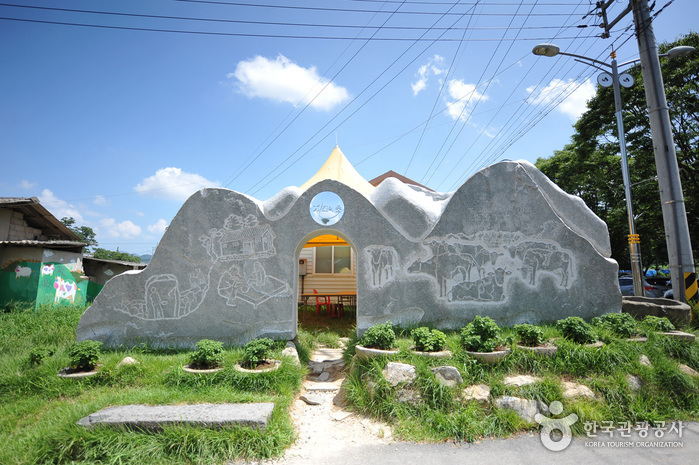

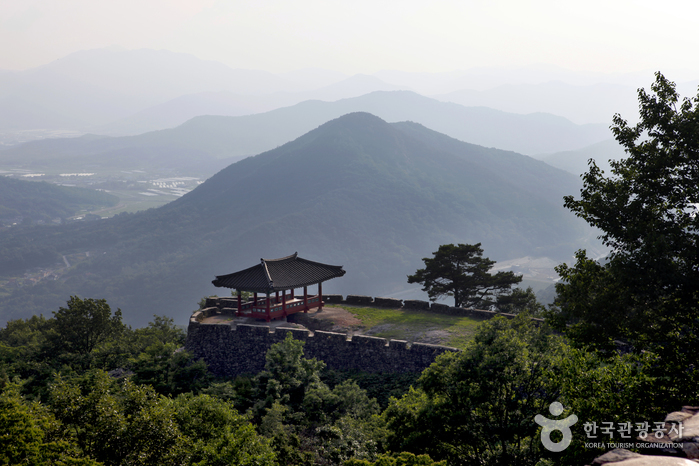
![The Face Shop [Tax Refund Shop] (더페이스샵)](http://tong.visitkorea.or.kr/cms/resource/77/2890977_image2_1.jpg)
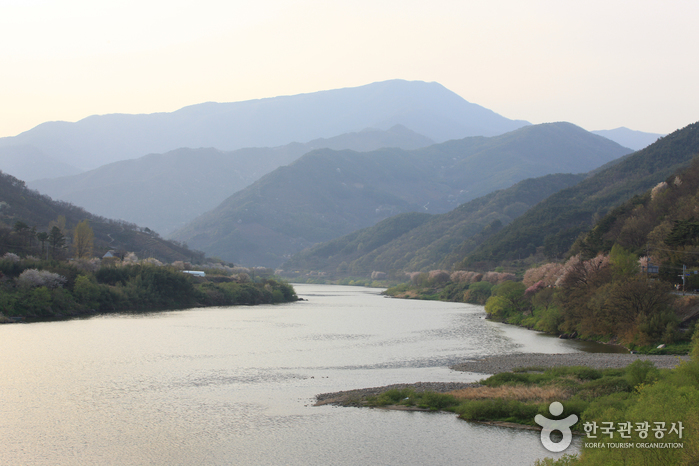
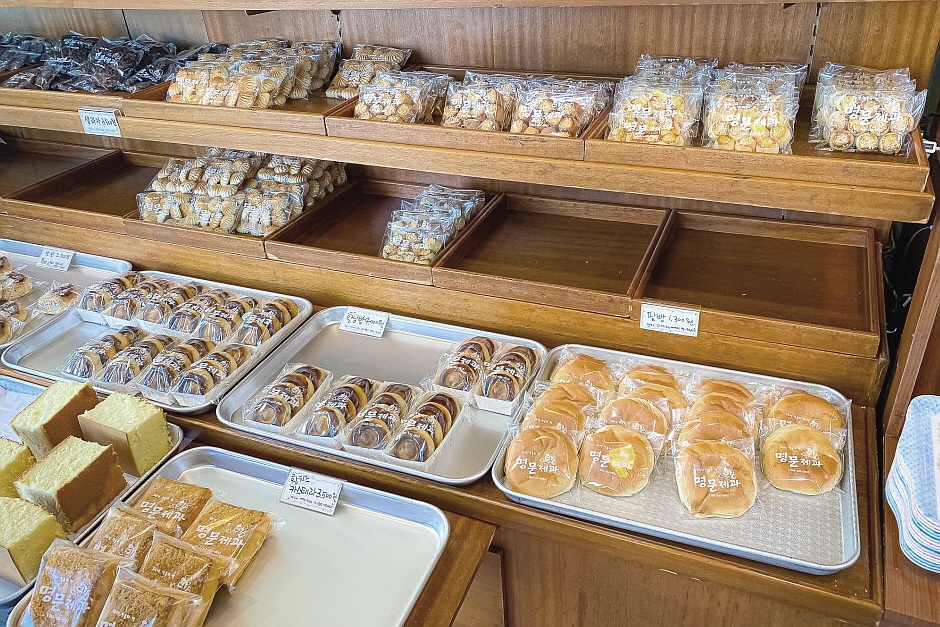
![Namwonyechon by Kensington [Korea Quality] / 남원예촌 [한국관광 품질인증]](http://tong.visitkorea.or.kr/cms/resource/25/2556425_image2_1.jpg)
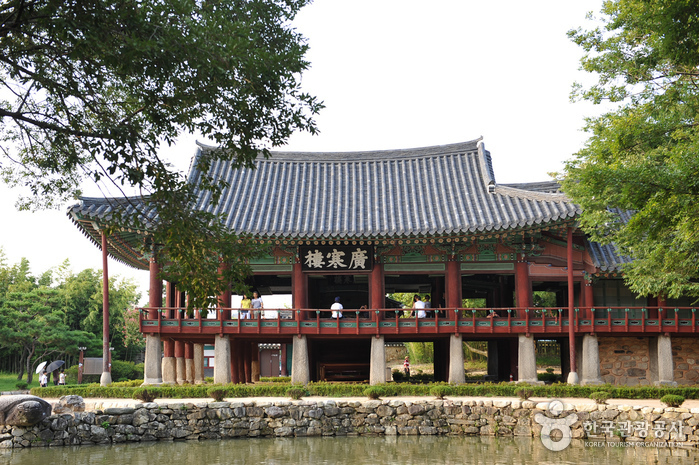
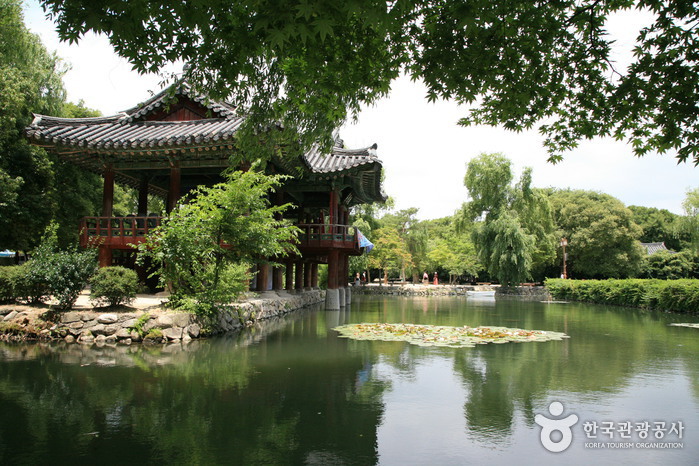
 English
English
 한국어
한국어 日本語
日本語 中文(简体)
中文(简体) Deutsch
Deutsch Français
Français Español
Español Русский
Русский